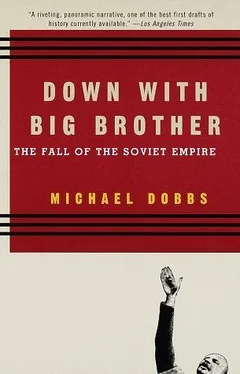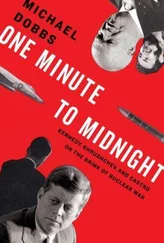A long history of struggle against foreign occupation, including Russian occupation, had prepared the Poles to resist attempts to Sovietize the country. At school children were encouraged to become Communist pioneers and follow the footsteps of “Grandpa Lenin.” At home they were brought up on tales of the epic anti-Russian uprisings of the nineteenth century and the “Miracle on the Vistula” in August 1920, when Marshal Józef Piłsudski’s legions routed the Red Army. In their factories, on weekdays, workers were exposed to an unending stream of Marxist propaganda at obligatory Communist Party meetings. In church, on Sundays, they attended to spiritual needs that were beyond the reach of the seemingly all-powerful state.
In 1966, at the age of twenty-three, Wałęsa moved from central Poland to Gdańsk, following in the footsteps of millions of young Poles. Gdańsk, formerly the free town of Danzig, had been part of the territories “reclaimed” by Poland following the defeat of Nazi Germany. During the first wave of migration, immediately after World War II, the largely German population was driven out. A second wave of migration followed in the fifties and sixties, as the result of the Communist government’s program of breakneck industrialization. A predominantly agricultural country was transformed into a predominantly urban one in the space of two decades.
There was a political rationale behind this social revolution. Marxist ideologists believed that the most effective way of consolidating the power of the party—and shattering the reactionary influence of the church—was to create an urban working class. The church could continue to wield its influence in the countryside, but the party would dominate the cities.
If the party had provided the new proletariat with decent working and living conditions, the strategy might have made some sense. But the factories and coal mines of the workers’ state were sweatshops, more reminiscent of Dickensian England than the promised socialist utopia. The Lenin Shipyard, Wałęsa later recalled, lacked the most elementary conveniences for workers. “When I arrived, our shipyard looked like a factory filled with men in filthy rags, unable to wash themselves or urinate in toilets. To get down to the ground floor where toilets were located took at least half an hour, so we just went anywhere. You can’t imagine how humiliating these working conditions were.” 64In rainy weather workers returned home soaked to the skin because there was no place to change. Safety standards were abysmal. Shortly after Wałęsa joined the shipyard as an apprentice electrician, twenty-two workers were burned alive in an explosion on a ship they were rushing to complete.
Living conditions for workers were equally primitive. The younger workers stayed in hostels, three or four to a room, with a kitchen and shower at the end of each corridor. Fights broke out frequently, particularly on payday, when workers drowned their misery in vodka. The areas around the hostels were wastelands of broken glass and uncollected garbage.
What Gdańsk did possess in abundance was the spirit of freedom. A strategically important port of nearly half a million people, the city has always looked outward. From the fourteenth to the seventeenth century, it was one of the most important trading posts in the Baltic. The magnificent old town, with its baroque and Gothic churches and Renaissance guild hall, was built during a period when Gdańsk was the respected trading partner of cities like Bruges, London, and Hamburg. The huge granaries along the banks of the Vistula River are a reminder of the time when Poland was Europe’s largest grain exporter. During the Communist period, as Poland became a net importer of food, the grain started moving in the opposite direction.
Proclaimed a Free City after World War I, under League of Nations control, Gdańsk was the spark that ignited World War II. Hitler was determined to get Danzig back and cut Poland’s land corridor to the sea. The first shots of the war were fired a few miles away, at the coastal fort of Westerplatte, by the German battle cruiser Schleswig-Holstein on September 1, 1939. To die or not to die “for Danzig” became a burning moral issue for millions of young Europeans who could barely locate the city on a map.
The city’s reputation as a flash point for political unrest was strengthened by the workers’ rebellion of December 1970. The first confrontation with the security forces had taken place right outside the shipyard gate. The workers had intended to march to the town hall with the centuries-old demands of Polish insurrectionaries, bread and freedom. Singing the Communist anthem, the “Internationale,” they were greeted by a burst of automatic rifle fire. Within seconds dozens of demonstrators lay sprawled on the ground. The casualty toll from that single incident was four dead and fifteen injured. 65
A member of the original shipyard strike committee, Wałęsa remained obsessed with the idea of honoring the memory of his fallen comrades. He remembered how the survivors had draped the murdered workers’ helmets in black crepe and attached them to the shipyard gate. They had daubed the blood of the victims onto bedsheets to form four red crosses, which they hung from a window of the shipyard hospital. “We then sang the national anthem, laying particular stress on the words: ‘We’ll recover with the sword what the alien forces have taken from us .’ Loudspeakers had been set up on the gate so that the government pawns could hear what we had to say, and we began the chant, ‘Murderers, murderers.’ ” 66
The Communist authorities were equally determined to erase all traces of the tragedy. The corpses of the victims had been spirited away in the middle of the night, to be buried in unmarked graves. Their relatives were warned to keep quiet or face the possibility of dismissal from work or losing their place in the line for housing. The Communist apparatchiks and army generals who gave the order to shoot were never punished. Promises to erect a monument to the dead were never kept. It was even unclear exactly how many people had died as a result of the disturbances. The official figure was fifty-five, but many people in Gdańsk suspected that the real number was much higher.
Wałęsa used anniversaries of the December 1970 riots to denounce the Communist authorities. He organized unofficial rallies outside gate number two of the shipyard to demand that the authorities keep their promise to erect a memorial to the dead. The number of people attending these rallies grew from six in 1976 to one hundred in 1977 to five hundred in 1978. In December 1979 the shipyard management had attempted to sabotage the commemoration by sending workers home early, ostensibly as an “energy-saving measure.” But some five thousand people turned up to listen to Wałęsa call for the establishment of a free trade union, independent of Communist Party control. At the end of his speech he urged everybody in the crowd to return to the same spot the following year, bearing a large stone.
“We’ll build a mound with those stones, we’ll cement them over, and that will be our monument. We’ll erect it ourselves.!” 67
THE SHIPYARD STRIKE WAS originally planned for August 13, 1980. But Wałęsa had to help his long-suffering wife, Danuta, at home that day—she had just given birth to their fifth child—so the revolution was postponed for twenty-four hours.
The instigators of the strike were three young shipyard workers: Jurek Borowczyk, Ludwik Pradzynski, and Bogdan Felski. 68They all were in their early twenties, with no family commitments, few inhibitions, and practically nothing to lose. They shared the anger of the older workers over the humiliating living conditions and the arrogance of the one-party state but did not share their sense of caution. They had still been children in December 1970, when Polish security forces opened fire on workers outside the shipyard, and had not experienced political defeat. The consumer culture of the seventies, promoted by the party as a means of diverting the attention of young people away from politics, had put them in touch with Western fashions and Western ideas. While older workers were awed by the repressive power of the Communist government, for these young men, the regime was an irrelevance.
Читать дальше












